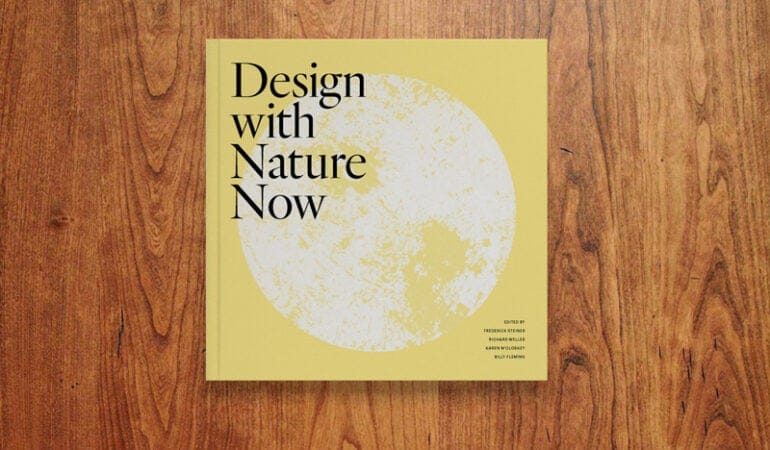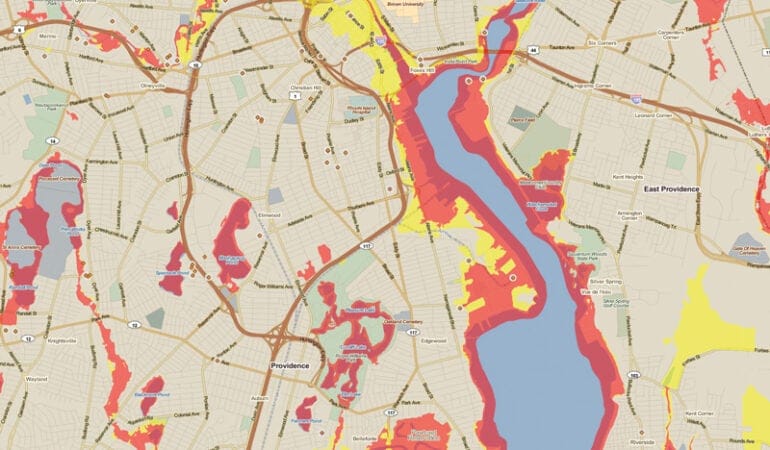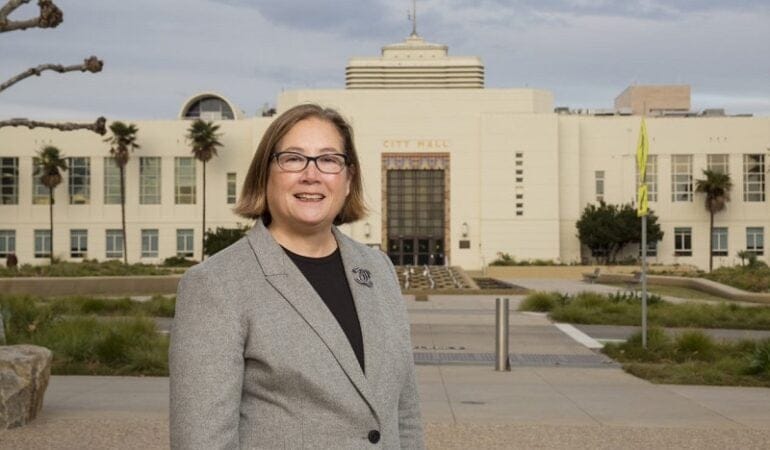In 1969, Ian L. McHarg, professor of planning and landscape architecture at the University of Pennsylvania, published a manifesto titled Design with Nature. Translated into Chinese, French, Italian, Japanese, and Spanish, and still in print to this day, it is arguably the most important book to come out of the design professions in the 20th century. Design with Nature not only captured the zeitgeist of the late 1960s by decrying modern civilization’s—or at least North America’s—sprawling urbanism and environmental degradation; it went further than most by proposing a practical method for doing something about it.
Using rudimentary digital tools and painstaking analog drawings, with his students and colleagues at Penn, McHarg developed a method of overlaying maps of the biophysical characteristics of a given place to make decisions about future land use. Part science and part common sense, the method provided an empirical, rational, and ostensibly objective basis for deciding which land was most suitable for which purpose—for example, farms on the good soil here, forest upland from water supply there, and of course, housing outside of flood zones and behind coastal dunes.
Throughout history, cultures have either withered or flourished as a result of how they live with land and water, or per McHarg, how they designed with nature. For cultures attuned through experience to the specific conditions of their landscapes, designing with nature becomes a form of lore. In this sense McHarg’s design philosophy is nothing new. But his advocacy of ecology as the basis for design and its application to the modern city was. McHarg’s great achievement, then, was to create a simple, universal method for assessing and then incorporating environmental science into the decision making processes of modern development. When applied well, his method offered a way to both guide and substantiate design decisions, especially those that limited the scope and scale of otherwise sprawling development.
However, Design with Nature is more than a land use manual. It soars from geology to cosmology, it cuts from Christianity to Buddhism, and it interleafs speculations on entropy and evolution to arrive at a unifying theory of design. For McHarg, to design with nature meant for humanity to intentionally and benignly fit itself to the environment. Drawing on the most advanced ecological science of his time, this idea of fitness flowed from a belief that cultural and natural systems could coexist harmoniously, in balance, if each part were in its proper place. For him, this was not just biological determinism at work; it was the highest of arts.
McHarg’s vision, like that of his mentor the great polymath Lewis Mumford and Patrick Geddes before him, was that by living with rather than against the more powerful forces and flows of the natural world, humanity would gain a biocentric sense of place; and this, in the deepest sense, would replace the Abrahamic theologies and capitalist culture of consumption he held responsible for the environmental crises of the 1960s.
For McHarg, Western culture’s greatest promise was a synthesis of the sciences and the arts that had yet to be applied to how we dwell on the land, and it was the profession of landscape architecture that could steward society through this evolutionary process. To this day, at least in theory if not in practice, this remains the field’s primary raison d’être.
On the occasion of the 50th anniversary of the publication of Design with Nature, with this new book and its associated exhibitions and conference, we ask what might be meant by design(ing) with nature now? As faculty at the school to which McHarg devoted his life, we feel a particular responsibility to explore these questions at this time and from this place. While McHarg’s prescience warrants celebration, our intention in marking the 50th anniversary of his magnum opus is not hagiographic. Rather, we view our responsibility, and the purpose of this volume, as one of constructive and critical discourse—to ask how the ethos of designing with nature has evolved over the past half-century, and to speculate on its prospects over the next fifty years.
By making recourse to Nature as a higher authority on the one hand and reducing it to interpretation through data-driven positivism on the other, McHarg was always going to get into philosophical trouble and attract criticism. Indeed, much of what has happened in landscape architecture over the past fifty years can be read as either an endorsement or a critique of his philosophy and method. Had McHarg titled his book Design with Landscape instead of Design with Nature, and had he offered caveats about the limits of his method to inform human creativity and ingenuity, then accusations of hubris and artlessness that were periodically leveled at him could have been largely avoided. But in his rush to change the field—and indeed to change the world—McHarg overlooked some of those critical details.
That McHarg inspired debate is, however, no small part of his enduring significance. Whereas these debates once may have threatened to split the profession between “the designers” and “the planners,” we can now see a profession that has intellectually matured around these tensions. We see a profession that is diversified in its practices but united in its sense of ecological and artistic purpose. We see a profession equipped with a range of design techniques that build on, rather than obviate, their foundation in the McHargian method of landscape suitability analysis described earlier. And yes, we also still see the rift between McHarg’s grandiloquence and daily practice—a rift that to some extent must always exist between the ideal and the real. Without gaps between the theory and practice of designing with nature, there would be nowhere for landscape architecture to grow or evolve. . . .
As anyone who knew him or even attended just one of his lectures will attest, McHarg was an unforgettable character, a man of passion and erudition in equal measure. Ian McHarg died in 2001, his life’s work completed well before the expressions “climate change” and “the Anthropocene” became central societal concerns. The environmental reality these terms now signify, the debates and anxieties they engender, and the increasing calls for climate action make McHarg’s prophetic injunction to design with nature more pertinent than ever. Paul Crutzen, the atmospheric scientist usually credited with first declaring this to be the epoch of the Anthropocene, has described its advent as beginning with the Industrial Revolution and then radically accelerating after 1945. In 2011, along with his colleagues Will Steffen and John McNeill, Crutzen argued that we should begin moving into a new period in which we “steward the earth.”1 This of course was the essential message of Design with Nature some fifty years earlier, and in this regard the profession of landscape architecture has been at the vanguard of a broader cultural revolution that now comes into its own in the context of the Anthropocene. This is not to say, however, that the profession has fulfilled its McHargian mandate of leading global environmental stewardship. Such a claim would be absurd. More to the point, it could hardly be argued that the world is environmentally better off now than it was when Design with Nature was first published. On the contrary, the dawn of the Anthropocene signals the opposite. We are plunging, headlong, into an epoch of global environmental change at an unprecedented scale and pace. How we learn to live with that change is the central challenge for the next half-century of design. In the work we have collected here there are real clues as to how, through design, we can better tune our cities and their infrastructure to the forces and flows of the Earth system. The fact that such projects are the exception and not the rule only underscores their importance as landmarks of a more widespread historical change yet to come.
The 21st century is marked by the fact that humanity has directly or indirectly modified every habitat on the planet, and much of it deleteriously so. With the unintended consequences of global warming, species extinction, and resource depletion, it is now possible that our extraordinary success as a species could also become our demise. Our recognition of this “tragedy of the commons” is what distinguishes us from other species that have also flourished in the course of evolutionary history. To not only know this, but to act on that knowledge in a precautionary way, is to intentionally design environments so that they are more life-giving and more life-sustaining, for all forms of life. This is not a punitive or messianic project; it is a political and above all a creative project, one that transcends geographies, economies, and the forces of globalization that have overwhelmed and divided the planet—between developed and developing, rich and poor. That is the enduring and inspiring meaning of Design with Nature, and it is to that end that this new book is dedicated.
Richard Weller and Karen M’Closkey are professors of landscape architecture at the University of Pennsylvania Stuart Weitzman School of Design. Frederick Steiner is dean and Paley professor at the school; Steiner and Weller are also co-executive directors of the school’s Ian L. McHarg Center for Urbanism and Ecology, where Billy Fleming serves as the Wilks Family Director.
Image: Cover of Design with Nature, 1969. Credit: Doubleday/Natural History Press, American Museum of Natural History.
Notes
1 Will Steffen, Paul J. Crutzen, and John R. McNeill, “The Anthropocene: Are Humans Now Overwhelming the Great Forces of Nature?,” AMBIO: A Journal of the Human Environment 38, no. 8 (2011): 614–621.





